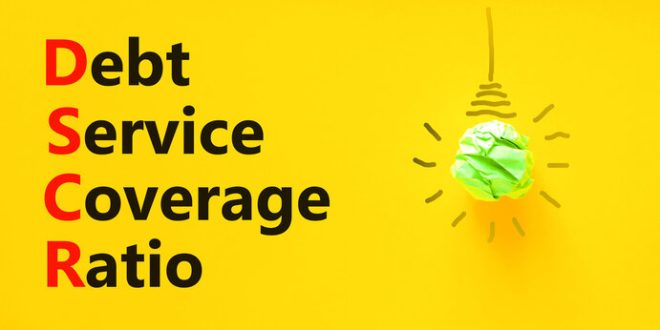Debt Service Coverage Ratio (DSCR) is a critical metric for anyone looking to secure a commercial construction loan. Lenders heavily rely on this figure to assess your financial ability to service debt and ensure the long-term success of your project. Whether you’re building a new commercial property or refinancing an existing loan, understanding and optimizing your DSCR can significantly impact your loan approval process and terms.
In this comprehensive guide, we’ll break down DSCR, its importance in commercial construction loans, how to calculate it, and actionable strategies for improving your ratio.
What is Debt Service Coverage Ratio (DSCR)?
Debt Service Coverage Ratio (DSCR) is a key financial metric used by lenders to assess the risk of lending to a borrower. It measures a property’s ability to generate enough revenue to cover its debt obligations. In simple terms, it shows whether your business generates sufficient income to pay off its debt after covering all other operational expenses.
Formula:
DSCR = Net Operating Income (NOI) / Total Debt Service
Where:
Net Operating Income (NOI) is the income generated by the property after operating expenses are deducted but before paying debt obligations.
Total Debt Service refers to the total amount required to repay loans (both principal and interest) over a specified period, typically one year.
A DSCR of 1.0 means you are breaking even, while a ratio above 1.0 indicates that you have sufficient income to cover your debt service.
Why is DSCR Important for Commercial Construction Loans?
When applying for a commercial construction loan, lenders are concerned about the risk involved. DSCR provides a straightforward way for lenders to measure your ability to service the loan. The higher the DSCR, the lower the risk for lenders, meaning you’re more likely to get favorable loan terms or approval.
Lenders typically look for a DSCR of at least 1.25, meaning the property generates 25% more revenue than required to meet debt payments. For riskier projects or those with uncertain cash flows, a higher DSCR may be required.
How DSCR Impacts Loan Approval
Higher DSCR: A higher ratio demonstrates a lower risk to the lender. Borrowers with a DSCR of 1.5 or above are often eligible for better interest rates and loan terms.
Lower DSCR: A lower ratio (below 1.25) may indicate that the borrower is at higher risk of default, potentially leading to higher interest rates or even loan rejection.
DSCR and Loan-to-Value (LTV) Ratio
Lenders often look at DSCR alongside the Loan-to-Value (LTV) ratio. While LTV measures how much of the property’s value is financed by the loan, DSCR focuses on the borrower’s ability to repay the loan. Balancing these two ratios is crucial to getting the best loan terms.
How to Calculate DSCR for Your Commercial Project
Calculating DSCR is straightforward if you have accurate financial projections. Below is a step-by-step guide to calculating DSCR for your commercial construction project.
Step-by-Step Guide to DSCR Calculation
Determine Net Operating Income (NOI):
NOI is the income generated by the property after subtracting all operating expenses but before subtracting debt service. This includes rental income, but excludes mortgage payments, depreciation, and capital expenditures.
Calculate Total Debt Service:
This includes both the principal and interest payments required to service the loan over a specific time period, typically one year.
Apply the DSCR Formula:
Use the formula:
DSCR = NOI / Total Debt Service
Example Calculation
Let’s say your project generates $500,000 in Net Operating Income (NOI) annually, and your debt service (principal and interest payments) amounts to $400,000 per year. Your DSCR would be:
DSCR = $500,000 / $400,000 = 1.25
This means you generate 25% more income than needed to cover your debt payments, making your project financially viable in the eyes of lenders.
What DSCR Lenders Look for in Commercial Property Loans
Lenders use DSCR to gauge the profitability and risk of your project. Understanding what they’re looking for can help you prepare a strong loan application.
Ideal DSCR for Different Loan Types
Construction Loans: Lenders usually require a DSCR of at least 1.25. However, higher DSCRs (1.5 or above) may be necessary for speculative projects or those in high-risk areas.
Permanent Loans: These typically require a DSCR of 1.25 to 1.5, depending on the property type and location.
Bridge Loans: Lenders might accept a lower DSCR (around 1.0) since these are short-term loans. However, borrowers will likely face higher interest rates.
Case Study: Strong DSCR Leading to Better Loan Terms
Consider a borrower looking to finance a commercial office building. With a DSCR of 1.8, they were able to secure a loan at an interest rate 1% lower than the market average. The strong DSCR demonstrated low risk, which reassured the lender and allowed for better loan terms.
Improving Your DSCR to Qualify for Better Loan Terms
A low DSCR can hurt your chances of getting favorable loan terms, but there are strategies to improve it before applying for financing.
Strategies to Boost Your DSCR
Increase Net Operating Income (NOI):
Focus on increasing property revenue through higher rents, better tenant management, or adding additional revenue streams (e.g., leasing additional space, offering premium services).
Lower Operating Expenses:
Streamline operations and reduce costs by negotiating lower maintenance contracts or reducing energy expenses with more efficient building systems.
Reduce Debt Service:
Consider refinancing existing loans at lower interest rates or extending the loan term to reduce monthly debt payments.
Increase Cash Reserves:
Lenders may allow some flexibility in DSCR requirements if they see you have substantial cash reserves that can act as a safety net.
DSCR for Different Types of Commercial Loans
Different types of loans have varying DSCR requirements. Here’s how DSCR expectations differ by loan type:
DSCR for Construction Loans
For construction loans, a DSCR of 1.25 is the minimum requirement, though many lenders prefer to see ratios closer to 1.5. The uncertainty involved in construction projects, especially new developments, requires higher ratios to offset the risk.
DSCR for Permanent Loans
Permanent financing typically demands a DSCR of around 1.25 to 1.5. These loans cover the long-term, post-construction phase, so lenders expect stable cash flows from the property.
DSCR for Bridge Loans
Since bridge loans are short-term and often used for properties in transition, DSCR requirements can be lower (around 1.0). However, the trade-off is usually higher interest rates.
Common Mistakes Borrowers Make with DSCR
Understanding DSCR can prevent costly mistakes. Here are common pitfalls to avoid:
Overestimating NOI
Borrowers sometimes overestimate their net operating income by not factoring in potential vacancies or maintenance costs. Ensure your NOI projection is realistic and conservative.
Underestimating Debt Service
Some borrowers overlook the impact of rising interest rates or balloon payments on their total debt service. Be sure to account for these when calculating your DSCR.
Ignoring Cash Flow Fluctuations
Cash flow fluctuations due to market conditions or tenant turnover can drastically affect your DSCR. Make sure to build in buffers for unexpected financial challenges.
How DSCR Affects Loan Refinancing and Future Borrowing
A strong DSCR not only helps you secure a loan initially but also plays a significant role in refinancing and future borrowing.
Refinancing Based on DSCR
Lenders evaluate DSCR when considering refinancing options. A high DSCR can help you secure better interest rates or more favorable loan terms during refinancing.
Future Borrowing Capacity
Maintaining a strong DSCR also improves your ability to secure future loans. Lenders will view you as a low-risk borrower, making it easier to expand your property portfolio.
FAQs About DSCR for Commercial Construction Loans
What is a good DSCR for a commercial loan?
A DSCR of 1.25 or higher is generally considered good, but higher ratios are preferred for riskier projects or uncertain markets.
Can I get a loan with a DSCR below 1.0?
While it’s difficult to secure a loan with a DSCR below 1.0, some lenders may approve loans for lower ratios, particularly with bridge financing, but expect higher interest rates.
How can I improve my DSCR before applying for a loan?
You can improve your DSCR by increasing your net operating income, reducing operating expenses, or refinancing existing loans to lower your debt service.
Does DSCR vary by property type?
Yes, different property types and loans have different DSCR requirements. For instance, office buildings and retail spaces might have varying DSCR thresholds based on market demand.
How does DSCR affect interest rates?
A higher DSCR generally leads to lower interest rates, as it reduces the risk for the lender. Lower DSCRs may result in higher rates.
Contact Us
If you’re looking to secure a commercial construction loan or have questions about how DSCR impacts your project, Commercial Construction Loans can help. With our in-house underwriting expertise, we offer customized solutions and personalized guidance to help you secure the best financing options. Contact us today to discuss your loan needs and learn more about how to optimize your DSCR for the best loan terms.
 Diverse Perspectives: Insights & Stories Exploring Ideas, Sharing Knowledge
Diverse Perspectives: Insights & Stories Exploring Ideas, Sharing Knowledge





